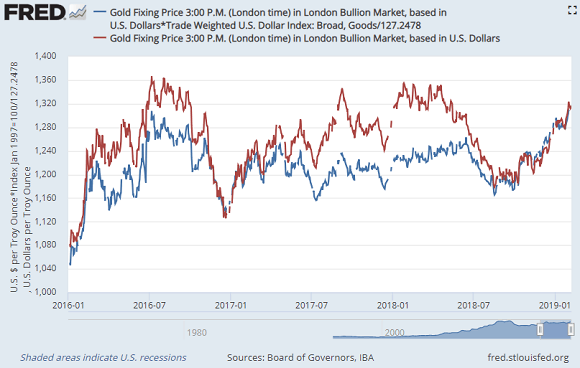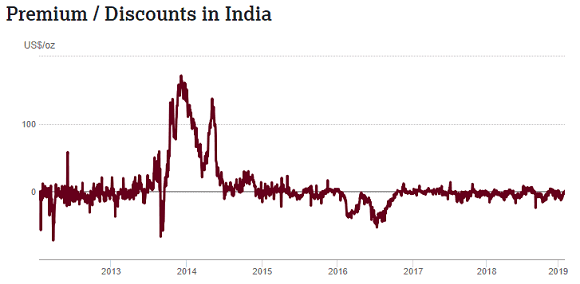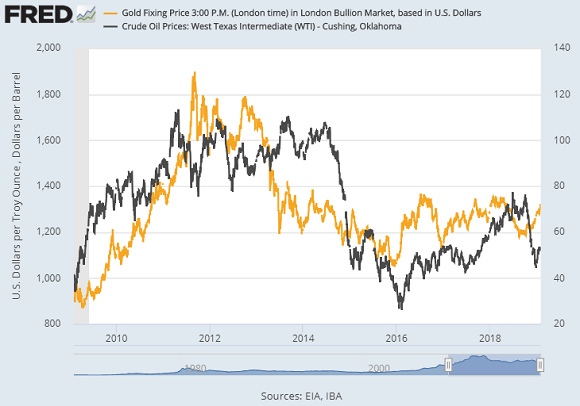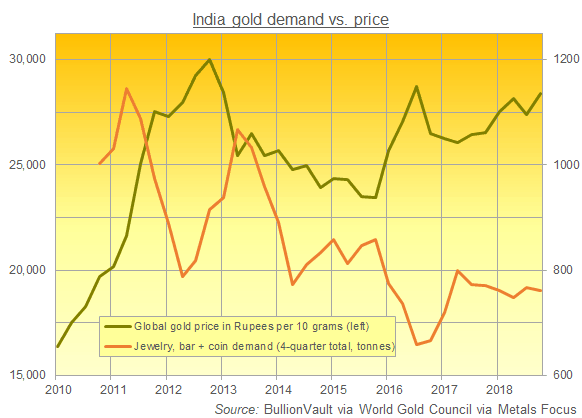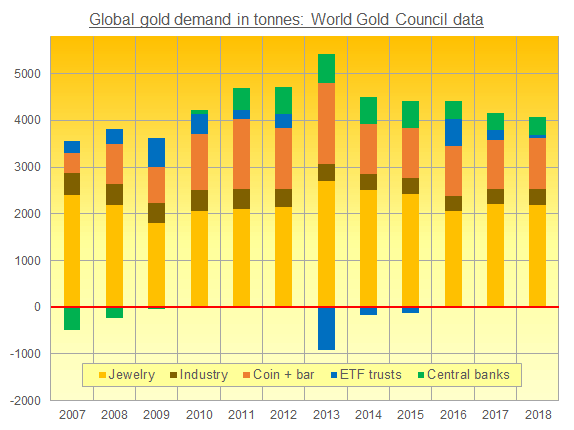In this article we’re going to look at what a troy ounce (the standard measurement for gold) really is, and why you might hear gold referred to as ‘four nines gold’.
Lets start with the troy ounce.
The Troy Ounce is a unit of measurement. The Troy Ounce has for hundreds of years in the Western world been the standard weight measurement for precious metals, and in the present day the major reason it is still in use is to measure the weight and mass of precious metals.
Think of the Troy Ounce as the equivalent to the “barrel” for oil – the standardized way of quoting and monitoring the value of precious metals.
Like a standard ounce it measures weight, although the two are different. A troy ounce of gold does not weigh the same as a standard ounce of butter or cheese.
As a precious metal investor it will help if you understand the difference between the two, yet many would be precious metal investors, and indeed some people who work in the gold industry are not aware that there is a difference between the two.
The “Troy” ounce is part of the troy weights system, which, with the exception of precious metals, is no longer used much. In large part, it was derived from the Roman monetary system. The term ‘troy’ was first attested in 1390, although some think we use the term troy ounces in reference to the French city of TROYES, which in medieval times was an important gold trading post.
In terms of the weight of one troy oz it is equivalent to 31.1034768 grams, whilst 1kg of gold is equal to 32.15 troy oz. A standard ounce weighs only 28.35 grams, so the troy ounce is just under 10% heavier than a regular ounce.
I’ll admit this confused me when I first stepped into the precious metal industry.
The troy ounce today is largely the same as the British imperial troy ounce of 1824-1971, which was adopted as official weight standard for United States coinage by an Act of Congress on May 19, 1828.
All respectable bullion dealers quote their products in terms of troy ounces, so its unlikely you’ll be tripped up when buying or selling precious metals, especially if you are using a company like ABC Bullion, but it does help to know the difference between the two.
For those of you who’d like a short read or two on the difference between troy ounces and regular ounces (called avoirdupois ounces) please click here and / or here.
http://en.wikipedia.org/wiki/Troy_ounce
http://lynncoins.com/troy_ounce.htm
The knowledge contained in those articles won’t change the price of gold but they might help you at the odd trivia contest and make you sound very knowledgeable at the family BBQ
Why Four Nines?
The other subject we are covering in this edition of bullion university is the number nine, and specifically, why gold is often referred to as ‘four-nines’.
It all comes down to international standards. The number 9 is important because investment grade metals are refined to international purity standards. For gold, the current purity standard for retail bars is 99.99%.
Note that is possible to create a 99.9999% pure gold bar or coin (apparently the Royal Canadian Mint produced a gold coin of this standard), but for the investment market, 99.99% pure gold is the standard.
The convention is to indicate this by stamping bars with “999.9” meaning that the bar or coin contains 999.9 parts of gold for every 1,000 parts metal or in percentage terms 99.99% pure.
As with most industries, they tend to create their own slang, so you may hear a bullion dealer, trader of refiner refer to this type of gold that is 99.99% pure as “four nines gold.”
“Three nines” for silver
For silver, the international standard is 999.0, meaning that the bar or coin contains 999.0 parts of silver for every 1,000 parts metal or in percentage terms 99.9% pure purity.
At this point maybe you’re wondering why there’s no 100% purity precious metal bars or coins?
Why 99.99% and not 100%?
The reason is that when these metals are refined, from mine output or recycling, they are often in a form that is alloyed with base metals (copper, zinc, lead, nickel).
During the refining process it is not practical to remove every last atom of those base metals, although at 99.99% and 99.9% the refiners do come very close.
Note buying precious metals at lower purity than the standard will restrict your ability to sell your metal and receive immediate payment as the dealer may require the metal to be refined.
There is another very important reason to buy physical gold and silver that is either 99.99% or 99.90% pure. And it’s got to do with tax.
You don’t have to pay GST on “four nines” gold, “three nines” silver or 999.5 Platinum that is in bullion form and has a recognized hallmark such as our own ABC Bullion brand or PAMP gold and silver.
I hope this article has enlightened you to the importance oz ounces and nines.
In summary:
1 troz ounce = 31.1 grams
1 kilo = 32.15 troy ounces
999.9 purity = 99.99% pure


